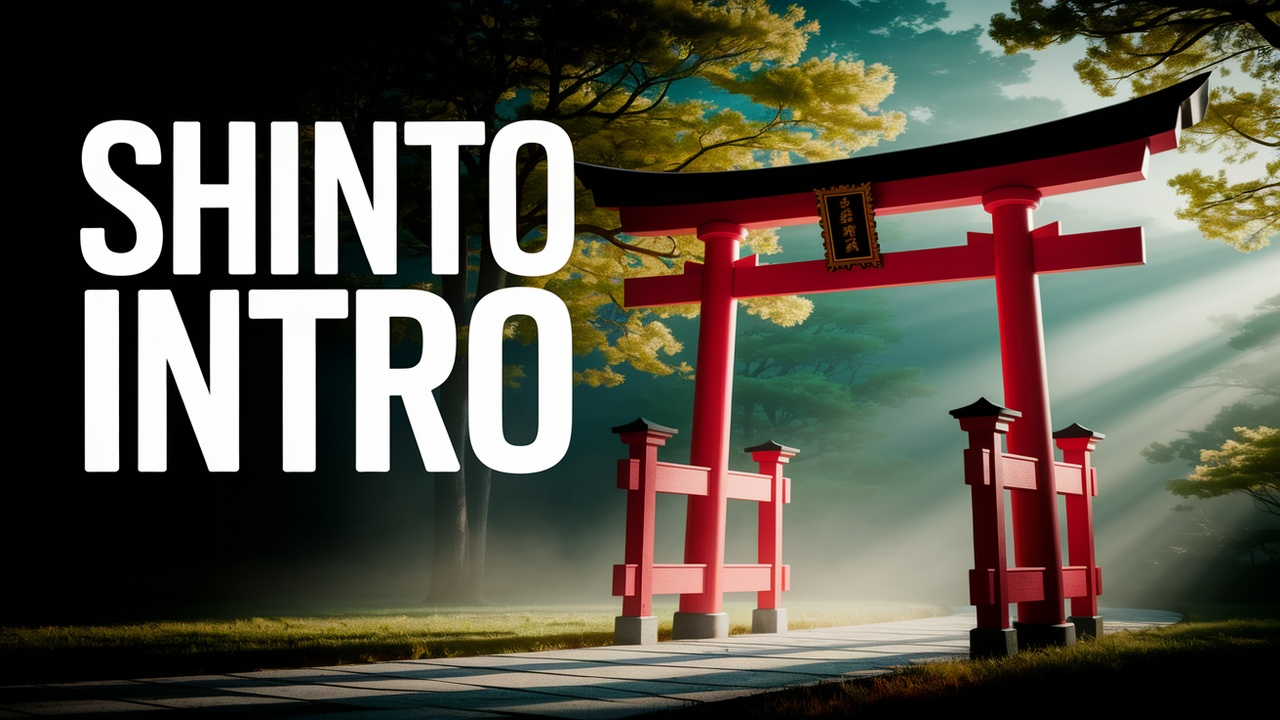
This comprehensive course provides an in-depth exploration of Shinto, the indigenous spirituality of Japan. Students will learn about its history, beliefs, rituals, and the role it plays in modern Japanese culture, offering a holistic understanding of this unique tradition.
Course Levels
-
Level 1: Foundations of Shinto
This level introduces the basic concepts and historical background of Shinto, setting the stage for deeper exploration.
-
Level 2: Shinto Practices and Rituals
Students will explore the various rituals and practices central to Shinto, gaining insight into how these elements shape Japanese life.
-
Level 3: Shinto Texts and Myths
This level delves into the sacred texts and mythology of Shinto, examining their significance and impact on Japanese culture.
-
Level 4: Shinto and Society
Students will investigate the relationship between Shinto and Japanese society, including its influence on culture, art, and identity.
-
Level 5: Contemporary Shinto
This level focuses on modern interpretations and practices of Shinto, exploring its relevance in today’s world.
-
Level 6: Comparative Religion
Students will compare Shinto with other world religions to gain a broader perspective on its unique characteristics.
Course Topics
-
Key Beliefs in Shinto
# Key Beliefs in Shinto Shinto, the indigenous spirituality of Japan, encompasses a rich tapestry of beliefs and practices that center around kami (gods or spirits), rituals, and a deep connection to...
-
What is Shinto?
# Understanding Shinto Shinto is a traditional Japanese religion that emphasizes the worship of kami, which are spirits associated with natural elements, ancestors, and sacred places. Unlike many org...
-
Environmentalism and Shinto
# Environmentalism and Shinto ## Introduction Environmentalism and Shinto are two concepts that intertwine in profound ways, particularly in Japan. Shinto, the indigenous spirituality of Japan, empha...
-
Shinto Myths and Legends
# Shinto Myths and Legends Shinto, the indigenous spirituality of Japan, is rich with myths and legends that have been passed down through generations. These narratives not only explain the origins o...
-
Revival Movements and New Practices
# Revival Movements and New Practices in Contemporary Shinto ## Introduction In the world of contemporary Shinto, revival movements and the emergence of new practices signify a dynamic engagement wit...
-
The Role of Nature in Shinto
# The Role of Nature in Shinto Shinto, the indigenous spirituality of Japan, is deeply intertwined with nature. The reverence for the natural world is one of the core tenets of Shinto belief, influen...
-
Daily Practices and Festivals
# Daily Practices and Festivals in Shinto Shinto, the indigenous spirituality of Japan, is rich with daily practices and vibrant festivals that reflect its core beliefs and values. This section explo...
-
Kami: The Spirits of Shinto
# Kami: The Spirits of Shinto ## Introduction to Kami In Shinto, the indigenous spirituality of Japan, **kami** refers to the spirits or deities that inhabit all aspects of the natural world. They a...
-
The Kojiki and Nihon Shoki
# The Kojiki and Nihon Shoki ## Introduction to Shinto Texts In the study of Shinto, two of the most significant texts are the **Kojiki** and the **Nihon Shoki**. These texts not only serve as histor...
-
Influence of Shinto on Art and Literature
# Influence of Shinto on Art and Literature Shinto, the indigenous spirituality of Japan, has profoundly influenced various aspects of Japanese culture, particularly in the realms of art and literatu...
-
Shinto and Buddhism
# Shinto and Buddhism: A Comparative Study ## Introduction Shinto and Buddhism are two of the most significant religious traditions in Japan. While they originated from different cultural and histori...
-
Shinto and Confucianism
# Shinto and Confucianism ## Introduction Shinto and Confucianism are two distinct but influential philosophical and religious frameworks in East Asia. While Shinto is predominantly practiced in Japa...
-
Shinto Shrines: Architecture and Symbolism
# Shinto Shrines: Architecture and Symbolism Shinto shrines, or *jinja*, are sacred spaces where kami (spirits) are worshipped. Their design and architecture are deeply rooted in Japanese culture and...
-
Shinto and Christianity
# Shinto and Christianity ## Introduction Shinto, the indigenous spirituality of Japan, and Christianity, one of the world's major religions, represent two distinct yet fascinating worldviews. This t...
-
Shinto and Japanese Identity
# Shinto and Japanese Identity ## Introduction Shinto, the indigenous spirituality of Japan, plays a vital role in shaping Japanese cultural identity. As a belief system, it intertwines with various ...
-
Shinto and Other Religions in Japan
# Introduction to Shinto and Other Religions in Japan In Japan, Shinto is not practiced in isolation. It coexists with various other religions, predominantly Buddhism, but also includes elements of C...
-
Historical Overview of Shinto
# Historical Overview of Shinto Shinto, the indigenous spirituality of Japan, embodies a complex interplay of mythology, ritual, and cultural tradition. Understanding its historical journey provides ...
-
Interpreting Shinto Texts
# Interpreting Shinto Texts Shinto, as one of Japan's oldest religions, is rich with texts that provide insights into its beliefs, practices, and mythology. Understanding these texts is crucial for a...
-
The Role of Myth in Shinto Practice
# The Role of Myth in Shinto Practice ## Introduction to Shinto Myths Shinto, the indigenous spirituality of Japan, is rich in mythology and folklore that shapes its practices and rituals. Myths in S...
-
Shinto in Modern Japanese Society
# Shinto in Modern Japanese Society Shinto, the indigenous spirituality of Japan, plays a vital role in shaping the cultural, social, and spiritual fabric of modern Japanese society. While Japan has ...
- And 5 more topics...